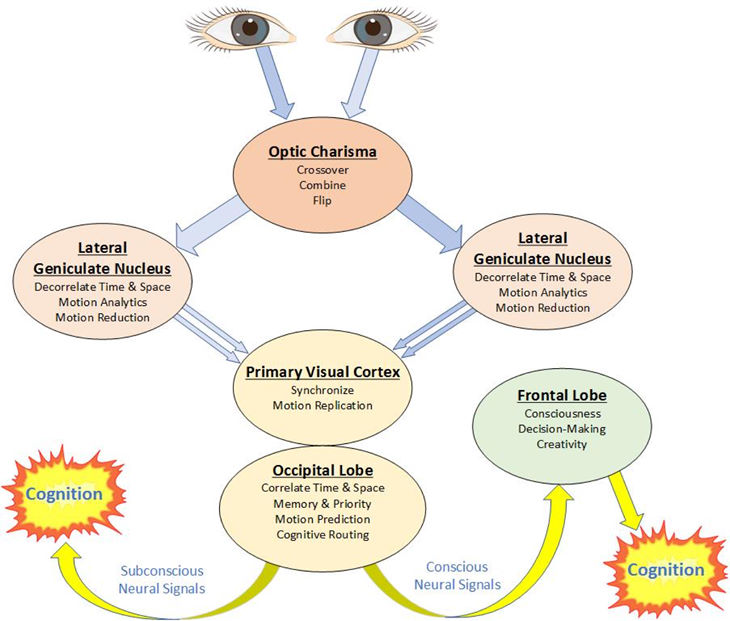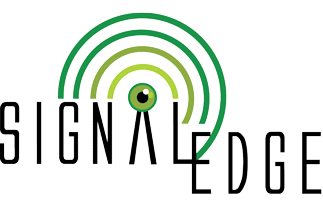Eyesight Mechanics
Eyesight Mechanics – Radical Reduction / Optimization of Visual Data Stream

Human eyesight mechanics provides a highly evolved communications framework for the transfer of visual sensory data. The process begins with two human retinas sending 30 to 60 frames of visual information a second which is assembled (synchronized, combined, flipped) and turned into right and left oriented perception data streams by the Optic Charisma.
The right and left hemispheric Lateral Geniculate Nuclei (LGN) then grab the right/left perception data streams. The LGN sets aside peripheral vision and focuses instead a primary field of vision’s motion which is then sent at high network speed through the optic tracts to the Primary Visual Cortex. The primary field’s motionless data is also sent, but at a low network speed. Separating motion data and quickening its transfer speed is critical to accelerating visual image processing to be able perform instant cognition, when fast action is needed.
On the other side of the optic tracts network, the Occipital Lobe’s Primary Visual Cortex applies recently received and just received sensory data to replicate the original field of vision. The Occipital Lobe then draws from experience, to complete its understanding of the ongoing event. It then delegates further action to either the subconscious or to the conscious. If the Occipital Lobe determines that the event is predicable, the event’s neural signals are passed off to the subconscious to perform automatic reaction processing.
